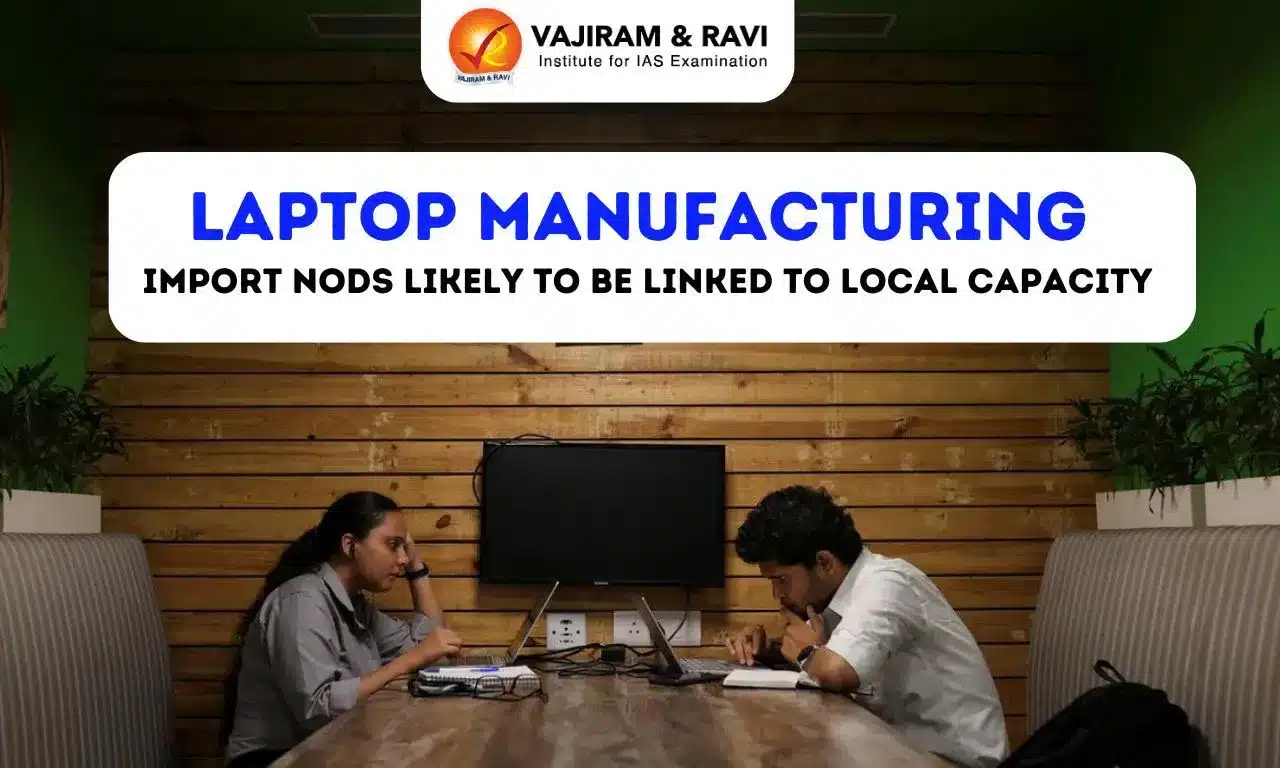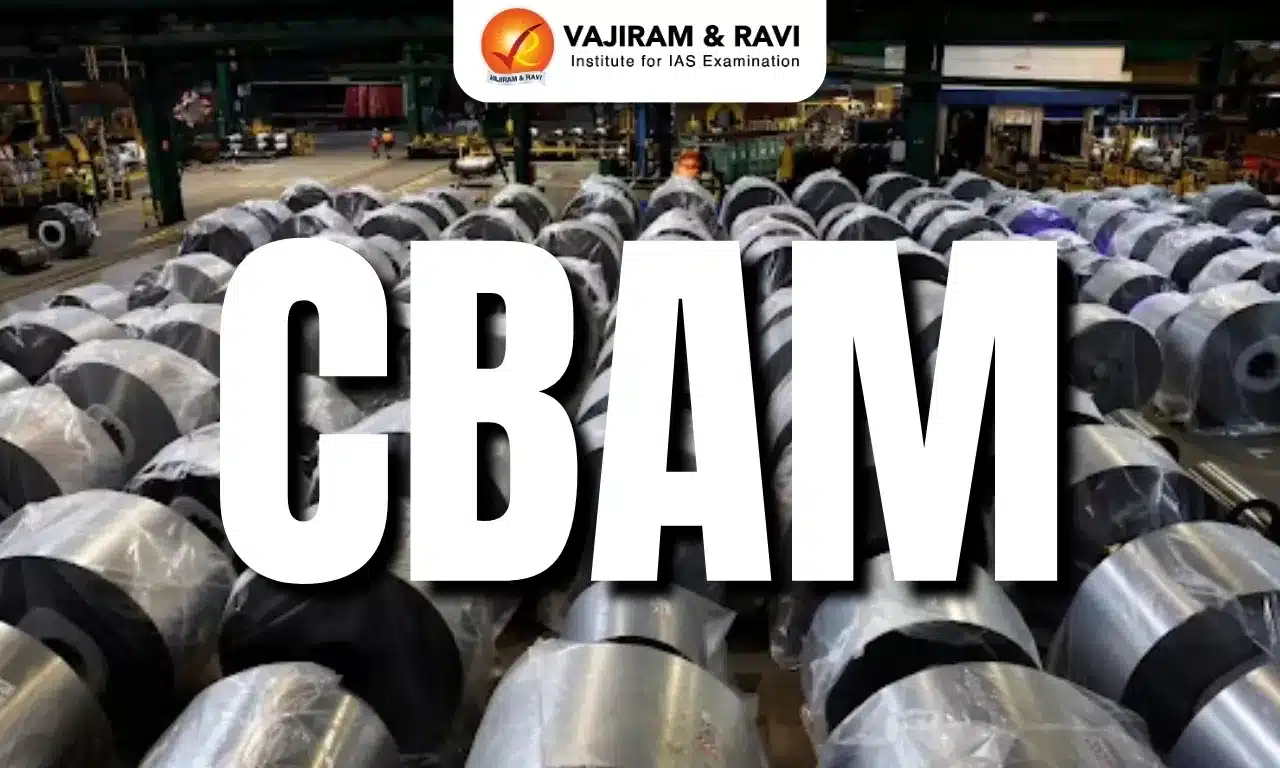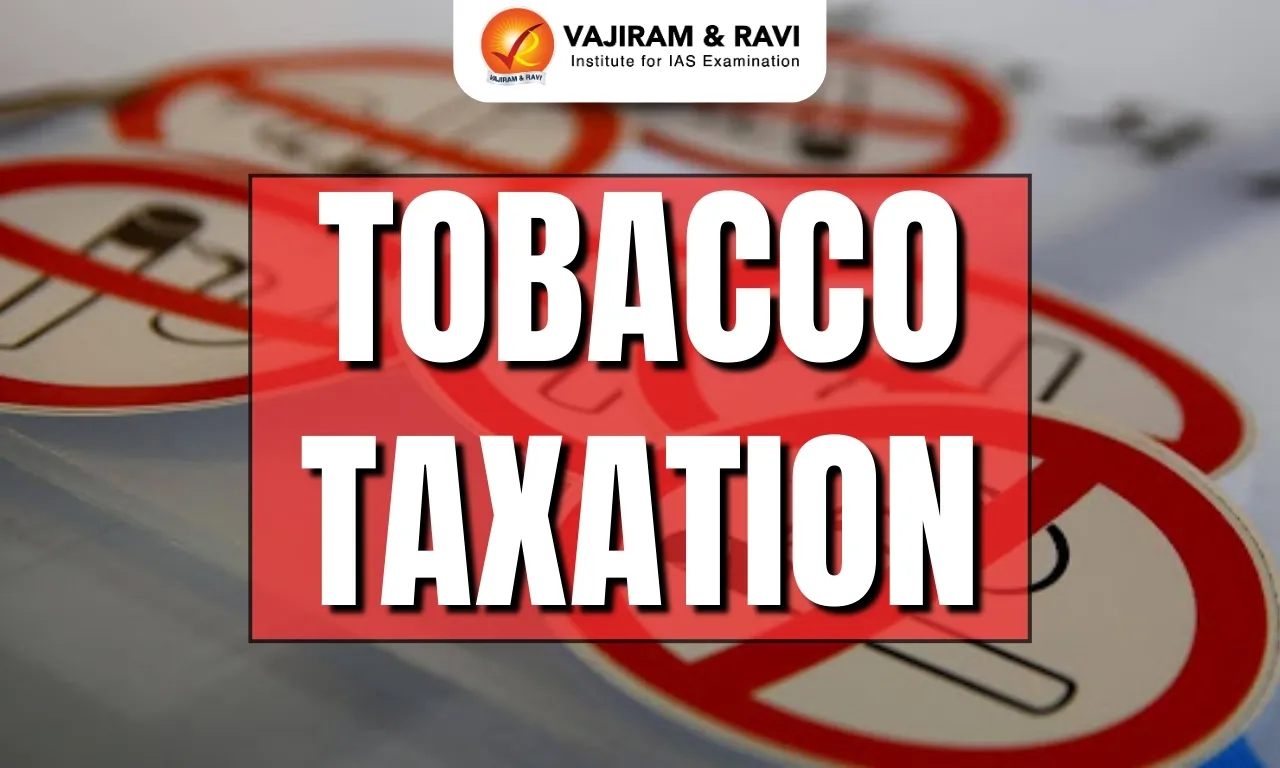What’s in today’s article?
- Introduction
- Strategic Policy Measures
- WTO Commitments and Global Trade Concerns
- India’s Import Dependency
- Domestic Production Challenges
- Way Forward
Introduction
- India’s heavy reliance on imported IT hardware, such as laptops and PCs, has driven the government to explore strategies to boost domestic manufacturing.
- This includes linking import permissions to domestic capacity expansion and introducing a credit system for imports once production meets critical thresholds.
Strategic Policy Measures
- Import Restrictions Tied to Domestic Manufacturing:
- The government plans to emulate the successful strategy used in the tyre manufacturing sector.
- In 2020, restrictions on new pneumatic tyre imports led to global players like Bridgestone, Michelin, and Goodyear investing over ₹1,100 crore in local facilities.
- A similar conditional easing of import norms is being considered for laptops and PCs, tied to commitments for domestic production.
- Credit System for Imports:
- A credit system for IT hardware imports may be introduced, with detailed policies expected as domestic production gains momentum.
WTO Commitments and Global Trade Concerns
- WTO Constraints:
- India cannot impose higher duties on IT products, as they are bound by zero-duty commitments under the WTO’s Information Technology Agreement (1997).
- Global Pressure:
- China dominates the global IT hardware market, with an 81% share of PCs and laptops and exports worth $163 billion in 2022.
- Leading US-based companies like Apple, Dell, and HP, which produce in China, have raised concerns about India’s import monitoring system.
- Japan and China have also formally expressed opposition to India’s laptop import licensing measures.
- India’s Security Goals:
- While trade partners fear trade restrictions, the Indian government emphasizes that its policies aim to achieve self-reliance for national security, not impose undue barriers.
India’s Import Dependency
- In FY24, India imported electronic components worth $34.4 billion, making it the fifth-largest imported commodity.
- Imports from China ($12 billion) and Hong Kong ($6 billion) accounted for over 50% of total electronic imports.
- Over the last five years, imports from China and Hong Kong have far exceeded those from South Korea, Japan, Taiwan, and ASEAN nations combined.
Domestic Production Challenges
- Slow Progress in IT Hardware Manufacturing:
- Despite initiatives like the revamped Production Linked Incentive (PLI) scheme (2023), domestic production of laptops and tablets has yet to scale up significantly.
- 27 companies, including Dell, HP, Lenovo, and Foxconn, have been approved under PLI 2.0 but are still in the early stages of production.
- Extended Import Authorizations:
- Import restrictions under the Import Management System (IMS) have been extended until December 31, 2025, to prevent shortages and price hikes.
Way Forward
- To reduce import dependency and achieve self-reliance, the government is pursuing a multi-faceted approach:
- Strengthening Local Manufacturing:
- Accelerating PLI incentives and enforcing policies that link imports with domestic capacity expansion.
- Diversifying Trade:
- Exploring alternative supply chains to reduce dependence on China and Hong Kong.
- Encouraging Investments:
- Creating a favourable ecosystem for both domestic and foreign players to invest in manufacturing facilities.
- Balancing Global Commitments and Domestic Needs:
- Aligning policies with WTO obligations while protecting strategic interests.
Q1. When was the WTO established?
The WTO began life on 1 January 1995, but its trading system is half a century older. Since 1948, the General Agreement on Tariffs and Trade (GATT) had provided the rules for the system. (The second WTO ministerial meeting, held in Geneva in May 1998, included a celebration of the 50th anniversary of the system.)
Q2. What is the basic difference between Custom Duty and Excise Duty?
Excise duty refers to the taxes levied on the manufacture of goods within the country, as opposed to custom duty that is levied on goods coming from outside the country.
News: Laptop manufacturing: Import nods likely to be linked to local capacity
Last updated on January, 2026
→ Check out the latest UPSC Syllabus 2026 here.
→ Join Vajiram & Ravi’s Interview Guidance Programme for expert help to crack your final UPSC stage.
→ UPSC Mains Result 2025 is now out.
→ UPSC Notification 2026 is scheduled to be released on January 14, 2026.
→ UPSC Calendar 2026 is released on 15th May, 2025.
→ UPSC Prelims 2026 will be conducted on 24th May, 2026 & UPSC Mains 2026 will be conducted on 21st August 2026.
→ The UPSC Selection Process is of 3 stages-Prelims, Mains and Interview.
→ UPSC Result 2024 is released with latest UPSC Marksheet 2024. Check Now!
→ UPSC Toppers List 2024 is released now. Shakti Dubey is UPSC AIR 1 2024 Topper.
→ Also check Best IAS Coaching in Delhi

















